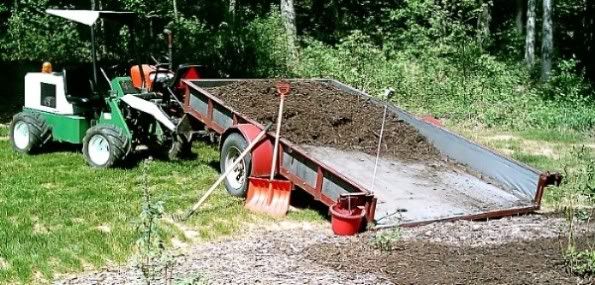<font color="blue"> ( Has anyone tried this or something similar? )
</font>
<font color="red"> NO!
Because the Attachment Plate is the lifting point designed by PT.
Lifting capacity is usually limited by the counterbalancing weight of the PT. (This is a useful safeguard! When I first got my PT I wondered what would bend, break, or fail if I attempted to overlift with it. I soon learned to my great relief that nothing bad happens - the rearend just starts to raise off the ground.)
Lifting part way back on the arm would usually cause interferance between the PT body and the load.
Lifting by just one arm could twist and damage the arm assembly.
Lifting by the crossmember could bend it, or overload other expensive parts.
Lifting by or near the toggle could bend or damage it.
It is better to not lift something than to damage the PT trying!
Lift with the lightest attachment possible. The Grapple Bucket will lift the least. The LM Bucket will lift more. The Forks still more. The Potato Digger even more. But the bare Attachment Plate will lift the most.
Keep the lifting point of the load as close to the Attachment Plate as possible. Don't lift with the Fork tips.
PS: This is my Power Dump Trailer. Since a full load of mulch weighs about 3000#, my PT-425 may be lifting close to 1000# at the Attachment Plate to tip this remaining load up!
</font>


